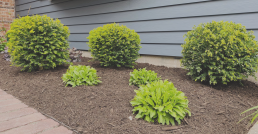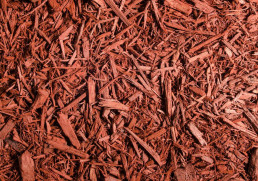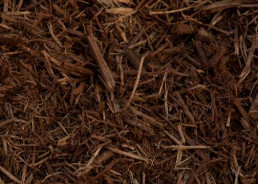Dos and Don'ts of Mulch
Mulch refers to any material that you spread over the surface of your soil. This can help retain moisture in the soil and prevent weeds from growing. In addition to this, mulch can help prevent your soil from freezing during the winter months of the year while also keeping your soil cool during summer. Mulch can be made from plastic, fabric, stone, and even organic materials such as wood, paper, and straw. Organic mulch can even enrich the soil as it breaks down and decomposes.
When adding mulch to your garden, there are some dos and don’ts to keep in mind. To help you use mulch effectively, we have listed some of the most important dos and don’ts down below.
Here are some of the dos and don’ts of using mulch around your home:
Dos when using mulch:
- Do use the right kind of mulch
As mentioned above, there are many different kinds of mulch that you can use around your garden. Organic mulch will enrich the soil as it decomposes.
- Do consider using organic materials around your home as mulch
If you have broken branches or fallen leaves laying around your backyard, you can make your own organic mulch at home. This can be effective while also saving you some money.
- Do use mulch to decorate your garden
Mulch can be used to decorate and add some aesthetic value to your garden. Using black mulch can even help make your flowers stand out.
- Do adjust the thickness of your mulch
Too much mulch in one place can be a bad thing. Thin out the mulch the closer you get to the edges of pathways or walls. When organic mulch breaks down, add more to keep the layer intact.
Don’ts when using mulch:
- Don’t use too much mulch
When adding mulch to your soil, don’t use too little or too much. Aim to keep the mulch around 2 to 4 inches thick at all times.
- Don’t leave any soil exposed
Mulch is most effective when it covers every single inch of soil in your garden. If your mulch breaks down and gaps start to appear, fill them as soon as you can.
- Don’t volcano your mulch
Adding lots of mulch at the base of the trunk or stem can cause collar rot. This can also restrict air to the soil and suffocate your plants. Adding a consistent layer of mulch around 2 to 4 inches thick is the most effective way to go.
- Don’t mulch with large rocks
Although using rocks as mulch can look incredible, rocks tend to heat up quickly and can end up drying up the soil underneath. This makes organic mulch a far more effective option as it protects the soil while also breaking down over time to enrich it.
We pride ourselves on service and quality. Whether you are a professional landscaper or just looking to improve your home’s landscape, we can help! Please contact us to get a wholesale book or learn about all the great products and plant materials we have on-site at our garden center! We provide landscape solutions, from the ground up!
Western Red Cedar Mulch Ideas
Mulch is any material used to cover the surface of the soil. Mulching can help to conserve soil moisture, reduce soil erosion, suppress weed growth, and boost nutrients, making it crucial to a thriving garden. While there are various mulching options – wood is one of the most common options, with Western Red Cedar wood being one of the most popular types of wood for mulching.
Western Red Cedar mulch is made from wood from the bark of the Western Red Cedar tree (Thuja plicata). Typically, it’s usually available in chips or shreds. Western Red Cedar mulch has an aromatic smell, and it’s great at repelling insects. It also lasts longer than other mulches, making it a preferred mulching option among professional landscapers and landscaping enthusiasts. If you’re looking to improve your garden using mulch, here are some great Western Red Cedar mulch landscaping ideas:
Create an Inexpensive Drainage Solution
If your yard is susceptible to water puddling when it rains heavily, western red cedar mulch can be a cost-effective way to resolve the problem. Add mulch chips to the pathways where water often puddles. The mulch chips will absorb the water and improve drainage.
Complete a Rustic Look
Western Red Cedar mulch can make the perfect companion if you have a wood cabin. Add the mulch to flowering plants around the cabin to enhance the cabin’s woody look. And if there’s a stone walkway leading up to the cabin, add some mulch to the side of the walkway to create the perfect rustic look.
Spruce up a Pathway
A pathway with stepping stones made from natural rocks may appear pretty ordinary. But, adding Western Red Cedar Mulch to it can make it appear more attractive. If you have a pathway that consists entirely of naturally cut rocks, add some Western Red Cedar mulch chips to accentuate it.
Create a Garden Bed Around Your Mailbox
Your mailbox probably isn’t the most noticeable thing in your yard. But planting some flowers around it can make it more prominent. Plant some evergreen flowers next to it so that you don’t have to worry about maintenance. Then create a simple border around the mailbox using Western Red Cedar mulch.
Combine Rocks with Red Cedar Mulch
Surrounding Western Red Cedar mulch with a rock border can make your front yard look attractive and neat. It can also make plant maintenance easier because the mulch will enrich the soil, reduce evaporation and prevent weed growth.
Create a Gradient
Create transitions from one part of your yard to the next to make your yard look attractive. To create a gradient pattern, first, create a section with grass. Afterward, add a section with the Western Red Cedar mulch and then one with rocks just before the concrete. Creating a gradient using mulch is an excellent way to make the different areas in your yard stand out while also enriching the soil.
Mulching Western Red Cedar can help to promote plant growth while making your yard look attractive. Use these landscaping ideas to spruce up your landscape using mulch.
Why You Should be Winter Mulching
Winter mulching is a powerful tool to use to protect your plants against harsh and fluctuating weather conditions. Mulch can be used to cover your soil to protect your plants throughout the year. Mulch can also help to maintain the temperature of your soil while also preventing weeds and pests from destroying your plants.
You can use organic mulch made of fresh wood chips, bark, or partially decomposed wood to help improve the soil and encourage plant growth. In addition to organic mulch, you can also use stone mulch to cover your garden and protect soil that could be vulnerable to washout.
Here Are Some Benefits of Winter Mulching:
- Protects plant roots from extreme temperatures
Mulch can play a key role in helping keep your plants and soil safe and healthy through extreme weather conditions. This is particularly true during the winter months of the year. Mulch can help cover your soil and prevent your plants from freezing, drowning, or washing away. In addition to this, mulch can also protect your soil from drying out due to excessive heat and UV light in the summer months.
- Insulates and maintains soil temperature
Another important role of mulch is to maintain your soil temperature throughout the year. Mulch can create a barrier between your soil and the elements to maintain a safe temperature for your plants to grow. This can be particularly useful for winter crops like garlic as it will prevent it from freezing during the colder months of the year.
- Helps prevent water loss from your soil
The barrier that mulch can create above your soil also helps the soil to retain moisture during the warmer months of the year. Especially if you live in a particularly dry area, you will not want water evaporating from the soil very quickly after you water it.
- Helps with pest control
A thick layer of mulch can also create a nice barrier to keep pests out. In addition to insects and bugs living within the soil, some insects also climb the stalks of your plants to get to the leaves and blossoms. This is why mulch can serve as a protective layer above the soil to help prevent them from doing too much damage.
- Improves the quality of your soil
When organic mulch breaks down, this can directly feed the soil around your garden. This can help bring nutrients to your garden soil and improve the soil structure as well. You can opt to use a 2-in-1 soil that can be used as an organic mulch to keep your soil cool and moist.
- Slows down weed growth
Adding mulch to cover your soil can also help prevent new weeds from growing when temperatures begin to rise. Adding mulch to your walkways and around plants can help you reduce the amount of maintenance you need to do.
- Adds color and texture to your garden
Lastly, adding mulch can allow you to add a splash of color or design to your garden. Organic or stone mulch can give your garden a much better look than ordinary dirt. With this, you can let your creativity thrive and give your garden a more aesthetically pleasing look.
We pride ourselves on service and quality. Whether you are a professional landscaper or just looking to improve your home’s landscape, we can help! Please contact us to get a wholesale book or learn about all the great products and plant materials we have on-site at our garden center! We provide landscape solutions, from the ground up!


